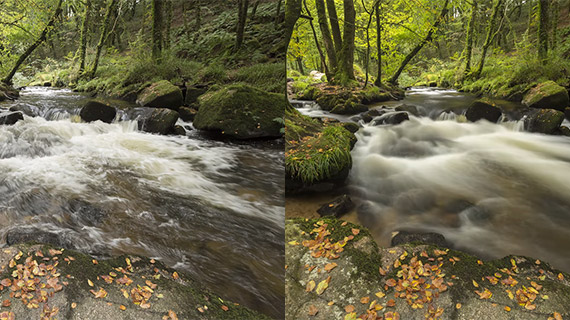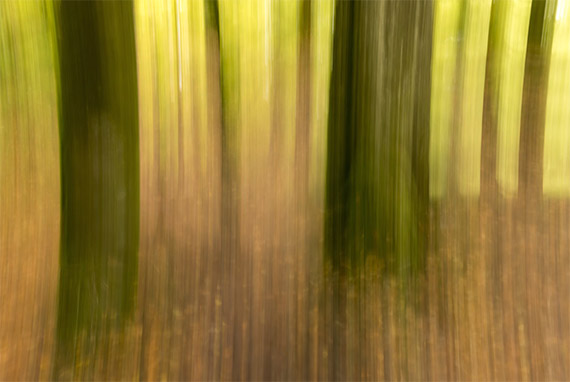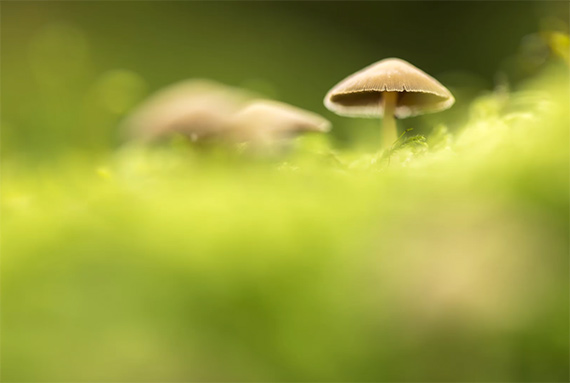Overcast days are great for shooting photos in the woods. You can experiment with photographing streams, waterfalls, trees, mushrooms and so on. However, shooting on overcast days and in dimly lit environments requires some planning and a meticulous approach. The following tips from Ross Hoddinot of NatureTTL will help:
Don’t Include the Sky
If you’re shooting woodlands on an overcast day, try to exclude the sky. When it’s overcast, the sky is often too bright in comparison with the foreground, and it gets blown out. Without a blown out sky you will have a lot more saturated look.
Use a Circular Polarizer
A circular polarizer helps reduce reflection, which is common when shooting streams, waterfalls, and brooks. Circular polarizers also increase saturation and contrast by reducing glare that comes off wet rocks and foliage, making images more vibrant.

Include Foreground Interest
Try to include elements such as autumn leaves and rocks in the foreground of your images to create a reference point on which to build the rest of the frame.
That said, when you’re shooting waterfalls or streams, the moving water itself becomes the point of focus of the image. You don’t necessarily need additional points of interest to make an image look good.
Use Good Composition Techniques
Elements like the natural curved shape of a stream create beautiful leading line effects. Try to use these lines to direct viewers through your images.
Try Intentional Camera Movement
Intentional camera movement during an exposure can lead to creative results. You’ll want to use a smooth moving tripod head and a slow shutter speed.

Geared heads aren’t the ideal when it comes to smooth movement. A ball head is a better option.
Also choose the right exposure setting to compensate for the slightly longer exposure time. A 1 to 2 second exposure time is a good place to start.
You’ll also have to select a low ISO to compensate for the longer exposure. You could also select a small aperture. Though, diffraction could be a problem in these situations.
And finally, you might need a solid ND filter to top it off.
Take Some Macro Shots
One advantage of venturing into the woods on an overcast autumn morning is that you can experiment with that soft light to shoot a number of subjects. Macro photography is one area that is a definite possibility.

Find a solitary subject. Small subjects like mushrooms are difficult to find isolated. Finding one that is isolated from the rest can take some time.
Once you’ve found the subject you want to photograph, set up your tripod for the shoot. Switch to live-view, as that gives you the best option to focus manually. Manual focusing tends to be precise.
A couple tools that will come in handy for macro shots in woodlands are a small LED light for experimenting with things like backlighting, and a small silver reflector.
Don’t let an overcast day keep you inside. Get out and take some woodland photos and show us your results.
Go to full article: Woodland Photography Tips
What are your thoughts on this article? Join the discussion on Facebook
PictureCorrect subscribers can also learn more today with our #1 bestseller: The Photography Tutorial eBook
The post Woodland Photography Tips appeared first on PictureCorrect.
from PictureCorrect https://ift.tt/2gVX9Hv
via IFTTT






0 kommenttia:
Lähetä kommentti